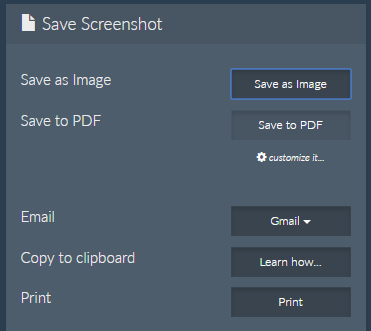

- #GOOGLE CHROME CAPTURE WEBPAGE CAPTURE LARGE PAGES HOW TO#
- #GOOGLE CHROME CAPTURE WEBPAGE CAPTURE LARGE PAGES UPDATE#
- #GOOGLE CHROME CAPTURE WEBPAGE CAPTURE LARGE PAGES FULL#
- #GOOGLE CHROME CAPTURE WEBPAGE CAPTURE LARGE PAGES FREE#
#GOOGLE CHROME CAPTURE WEBPAGE CAPTURE LARGE PAGES FULL#
To take the full screenshot of Power Automate using Chrome do the following:

Now press CTRL-SHIFT-M to bring up the device toolbar.Press CTRL-SHIFT-I to bring up the developer tools pane.It requires a little bit of configuration of Chrome.
#GOOGLE CHROME CAPTURE WEBPAGE CAPTURE LARGE PAGES FREE#
This method requires no add-ins, is free and easy to do. Power Automate Screenshot using Google Chrome Multiple images need to be manually stitched together and it is not an easy process.
#GOOGLE CHROME CAPTURE WEBPAGE CAPTURE LARGE PAGES UPDATE#
Once the full page screenshot is done, we do an update on the status of the request so the client is able to advance to the download step of the generated file.If you have a flow in Power Automate flow which is bigger than you can display on screen capturing the complete process can be quite time consuming. Each identifier is linked to a row in the requests table that contains the status of each request. That is why we implemented a database polling mechanism where we send an acknowledgement response on a request containing a unique identifier to the client to be used for the polling mechanism. newPage () Using database pollingįurther testing revealed that some requests with long pages were exceeding the server timeout. Once the Puppeteer pool is created, the acquire function can be used for each incoming request.
#GOOGLE CHROME CAPTURE WEBPAGE CAPTURE LARGE PAGES HOW TO#
Here is how to use the basic Puppeteer API to take a full web page screenshot: const url = "" let browser = await puppeteer. Our current solution went through multiple iterations: Version 1: Puppeteer full web page API To render a client site, we use a static web application that is capable of creating zones on the page and overlaying metrics on the page elements. We based our solution on Puppeteer because it produced perfect results on different edge cases from our client sites. Puppeteer is a Node.js library which provides a high-level API to control Chrome or Chromium with the DevTools Protocol. This can be done by using real-time communication to notify the client once the task is done or using a database polling mechanism to get the status of the task and proceed to download the screenshot once it is generated. Long processing: some screenshots might take a while to generate and require managing long tasks launched from the client.Server-side browser pool: the client can send multiple screenshot requests at the same time, which we can manage in parallel on the server side with a pool of browser instances.Using a server-side solution with an asynchronous request will provide a better user experience for the user, as he will still be able to navigate or request new screenshots while the processing is done on the server. In a client-side solution, a new window may be opened and the user will be blocked to do other actions until the screenshot is generated. Better user experience: to generate good web page screenshots, we may need to modify the content of the web page and execute scroll actions while processing.No client-side processing: all the processing will be done on server side where we do not rely on the user’s browser performance.We chose a server-side solution, which provides many advantages: Our solution draws inspiration from these projects but none could be used out of the box because we needed to handle edge cases such as fixed elements in the page, very long pages and pages that contain scrollable elements. full-page-screen-capture-chrome-extension: A simple Google Chrome extension.Playwright using a similar page.screenshot() API.Puppeteer using the page.screenshot() API.Today, different open source solutions already exist: Implementing this feature was challenging and required multiple iterations that we will detail below. Full web page screenshots are frequently used in Contentsquare’s Zoning module to share analyses with key collaborators as PDFs or PNGs.


 0 kommentar(er)
0 kommentar(er)
